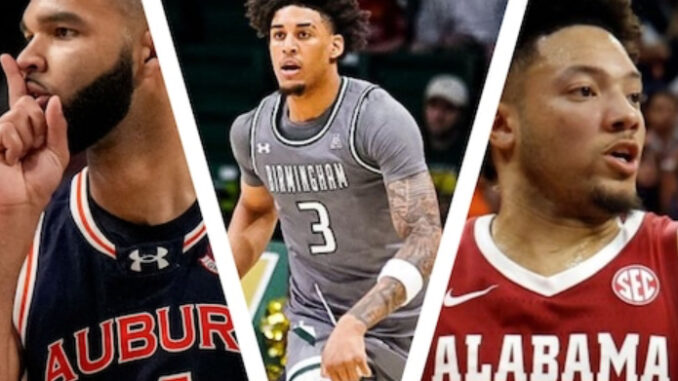
JOHNSON ADVICE:It’s time for Alabama and Auburn to start spending their millions at home……. Read more
Usually, at this time on the calendar, sports tourism in the state is on winter break — gone fishin’ or skiing because it’s too cold to do anything outside. Instead on Saturday, Tuscaloosa will feel like an afternoon in the fall when Alabama and Auburn, the No. 1 and No. 2 teams in the nation, meet in the most-anticipated basketball game in the state’s history.
And maybe the most lucrative. The coffers of bars and restaurants that are typically dormant until spring will be filled like on a fall afternoon, too. In late December, Auburn and Purdue met at Legacy Arena in Birmingham and created an estimated $1.5 million impact, according to the Greater Birmingham Convention and Visitors Bureau.
Indeed, across the state, sports events have become a driving force in local economies.
Earlier this month, the Huntsville/Madison County Convention & Visitors Bureau revealed that 68 sporting events brought in a record $51 million last year.
In Birmingham, the impact of 128 sports events totaled $223 million in 2024, according to a state report.
Yet while the rich get richer in Tuscaloosa this weekend, it will be another poke in the eye to the state’s smaller institutions and their athletic programs at a time when they’re struggling to compete in the new, evolving and catastrophically expensive era of college sports.
Starting this fall, under provisions of the sure-to-be-ratified revenue-sharing settlement of House v NCAA, schools will begin paying athletes between $20 million and $22 million annually — if they want to stay in the game at the highest levels.
Those teetering to remain competitive include UAB, whose basketball team is at least showing a pulse — the Blazers are 15-9 and in third place in the school’s second season in the American Athletic Conference. That’s the only sign of life for an athletic program desperately due a leadership transplant.
Alabama hasn’t met its sibling from Birmingham on the court in 32 seasons. (The Blazers won that 1993 joust 58-56 in Tuscaloosa in the first round of the March-Not-quite-Madness National Invitational Tournament. It’s the only time the sibling schools have met on the court.)
Auburn basketball hasn’t played UAB in six seasons, since a 75-71 War Eagle overtime win at Legacy Arena in 2018 that brought Auburn within a game of tying the series (11-10).
In football, Alabama has never played UAB, while Auburn’s only played them once — in 1996 at Jordan-Hare. (29-zip is all I’ll say; the spanking would be far worse today.)
Earlier this month in her State of the State address, Gov. Kay Ivey giddily claimed, “We might just become a basketball state.”
Well, now, amid this historic rise of Alabama and Auburn hoops, it’s never been more imperative that our two big dogs change an evident bias against playing in-state schools to help them remain economically viable and competitive.
To help them keep breathing.
Yes, schedules are locked years in advance, but that’s no excuse for ignoring your neighbors and waiting any longer to do what should have been done long ago:Schedule in-state schools in both sports and keep the millions Alabama and Auburn football spend annually to play out-of-state patsies at home.
Over the last 10 football seasons, Auburn hosted in-state schools just five times (Jacksonville State in 2015, Alabama A&M in 2016 and 2024, Alabama State in 2018 and Samford in 2023). (Auburn is scheduled to host North Alabama in 2028.) The funds they received from playing those games can make a big difference in their athletic budgets.
Alabama? Forget it. Alabama schools received nary an invite. Not a nickel.
Instead, UA invited Hilltoppers (Western Kentucky), Mocs (Mercer), Blue Raiders (Middle Tennessee) and Warhawks (UL-Monroe) to Tuscaloosa. Auburn hosted Flames (Liberty), Golden Flashes (Kent State), Red Wolves (Arkansas State) and Zips (Akron) to Jordan-Hare during that decade.
Neither school played the Blazers, Trojans (Troy), Jaguars (South Alabama) or Lions (North Alabama).
Last season, Alabama paid Western Kentucky ($1.9 million), South Florida ($400,000) and Mercer ($600,000) to come to Tuscaloosa, according to agreements obtained by AL.com’s Nick Kelly.
Be the first to comment